Teacher Observation Report Samples
-
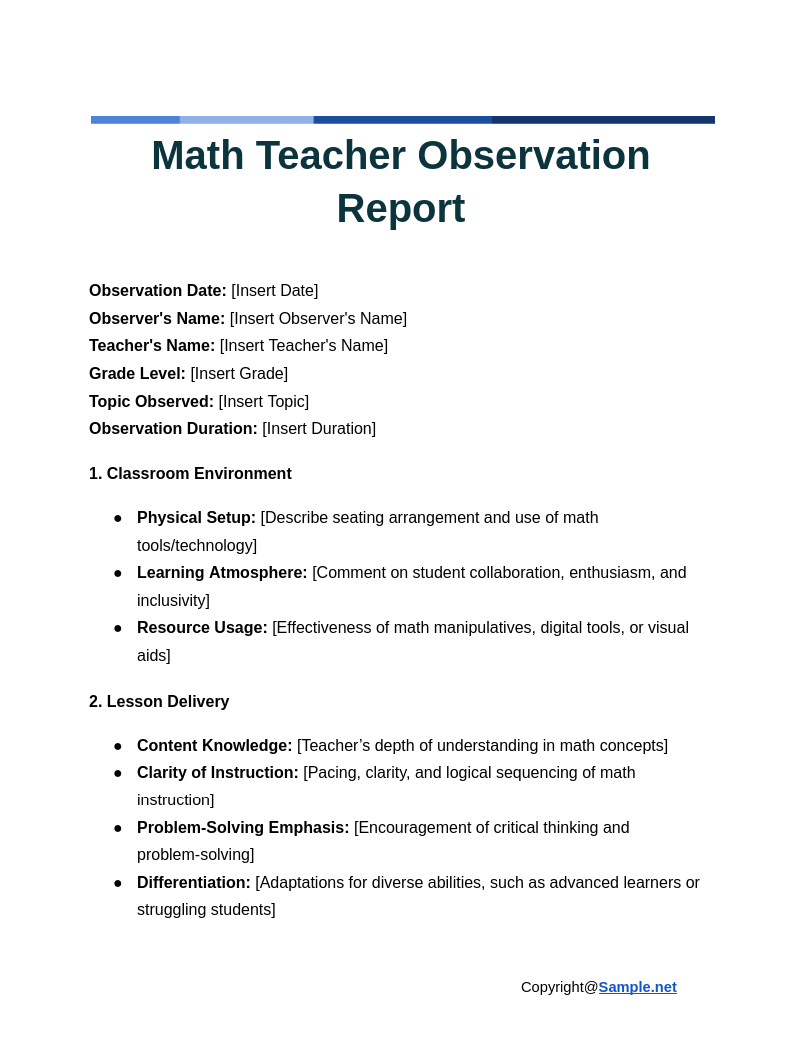
Math Teacher Observation Report
download now -
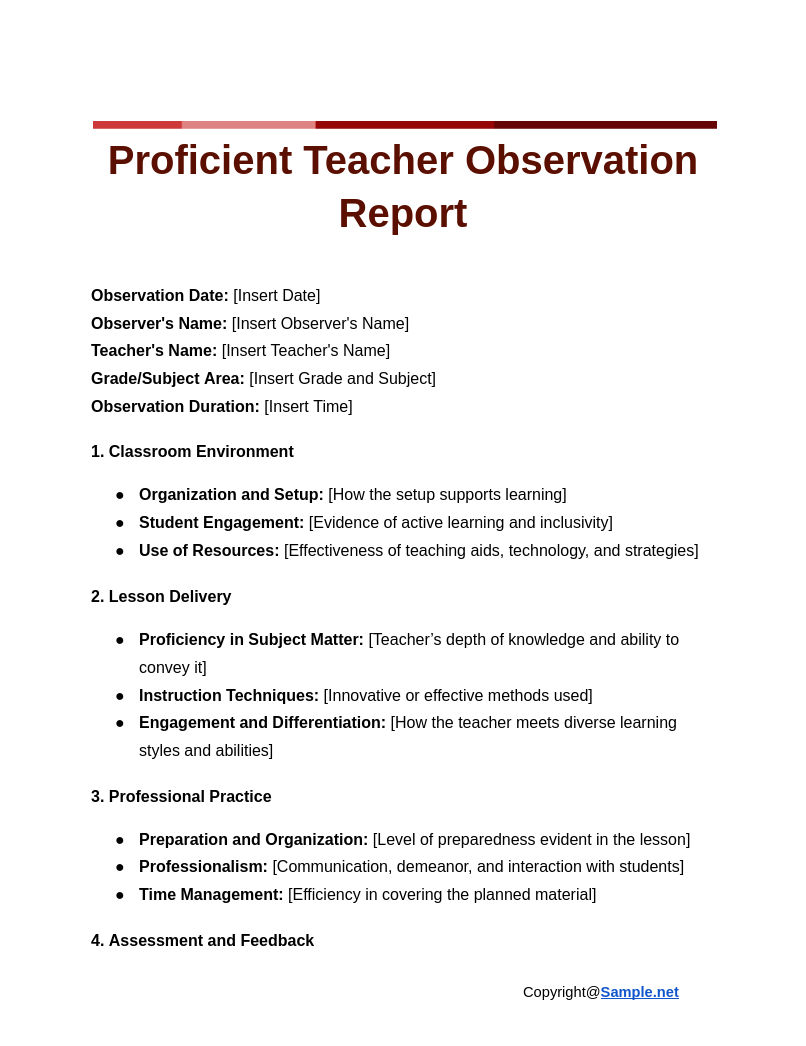
Proficient Teacher Observation Report
download now -
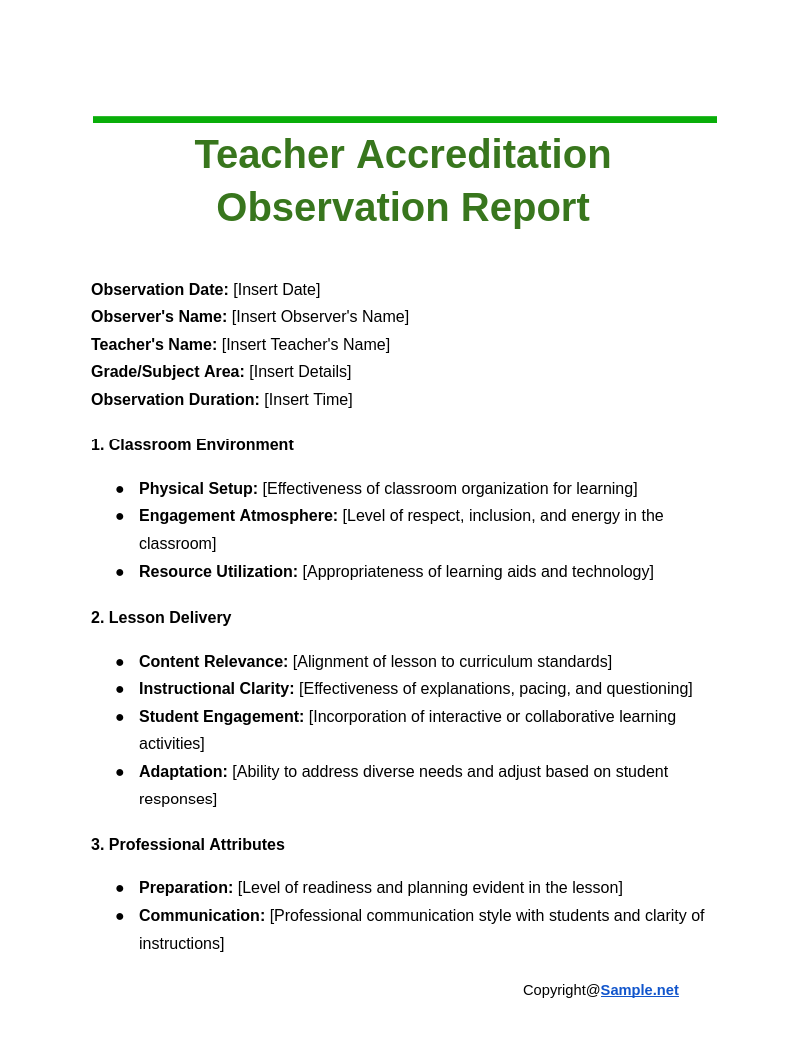
Teacher Accreditation Observation Report
download now -
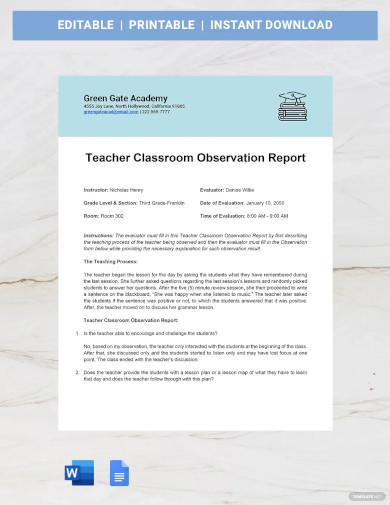
Teacher Classroom Observation Report Template
download now -

Student Teacher Teaching Observation Report
download now -
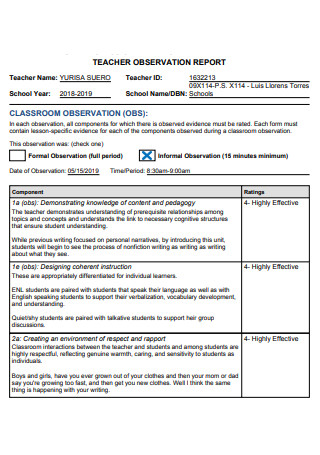
Basic PreSchool Teacher Observation Report
download now -
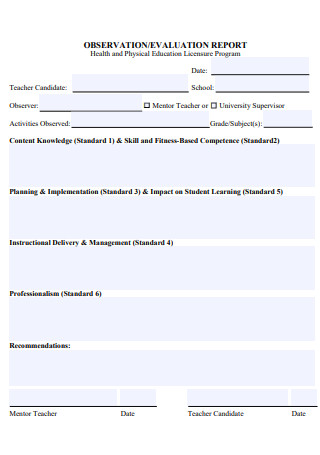
Teacher Field Observation Evaluation Report
download now -
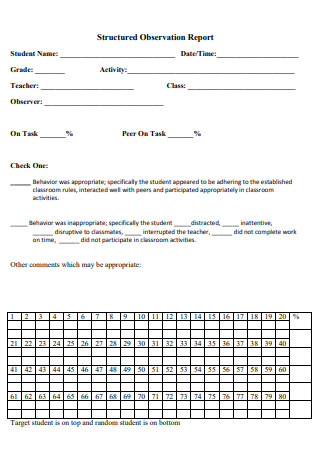
Structured Writing Teacher Observation Report
download now -
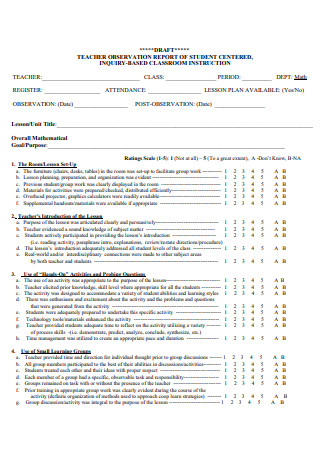
Draft Teacher Observation Report
download now -

Classroom Teacher Observation Report
download now -
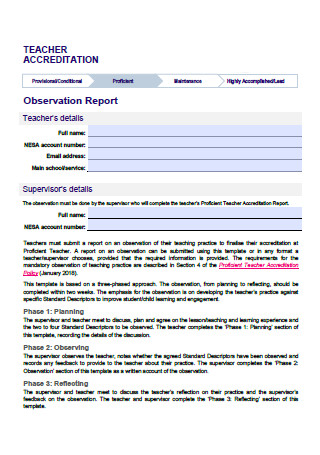
Formal Teacher Observation Report
download now -
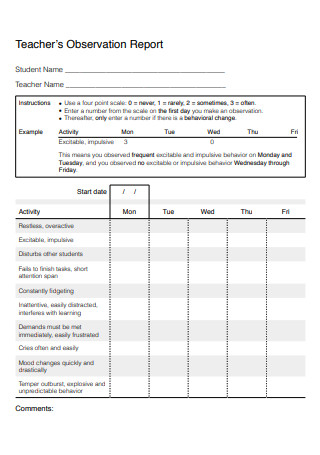
Teacher Observation Report Checklist
download now -
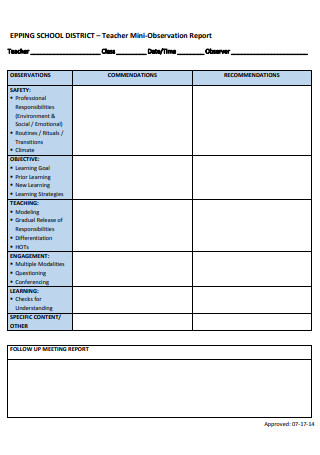
Early Childhood Teacher Observation Report
download now -

Teacher Child Observation Evaluation Report
download now -
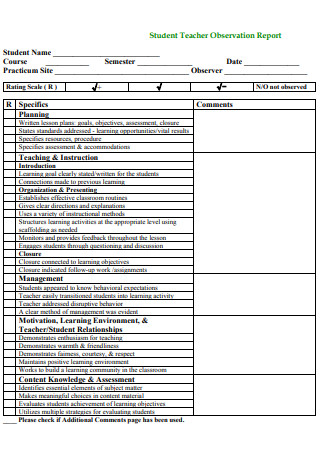
Student Narrative Teacher Observation Report
download now -
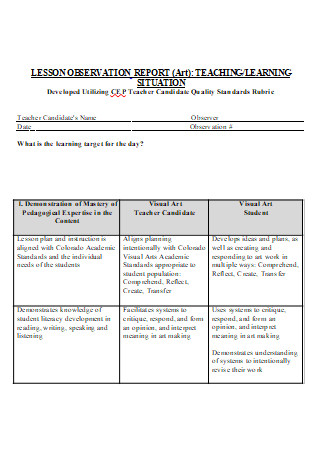
Teacher Principal Observation Report
download now -
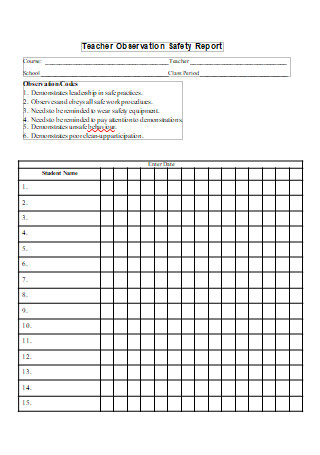
Teacher Observation Safety Report
download now
FREE Teacher Observation Report s to Download
Teacher Observation Report Format
Teacher Observation Report Samples
What is a Teacher Observation Report?
Purposes of a Teacher Observation Report
How to Create a Teacher Observation Report
Tips for Writing a Teacher Observation Report
FAQs
How do you write an observation report for a teacher?
What is a teacher’s observation?
What challenges are associated with creating Teacher Observation Reports?
How frequently should teacher observations be conducted?
How are Teacher Observation Reports used?
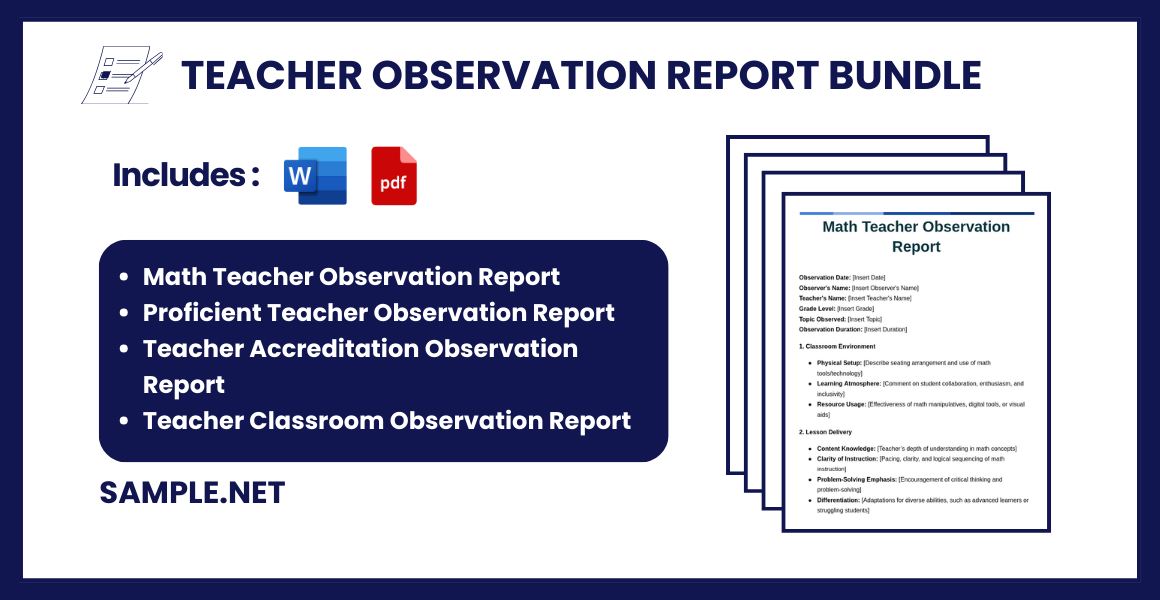
Download Teacher Observation Report Bundle
Teacher Observation Report Format
Observation Date: [Insert Date]
Observer’s Name: [Insert Observer’s Name]
Teacher’s Name: [Insert Teacher’s Name]
Subject/Grade Level: [Insert Subject/Grade]
Observation Duration: [Insert Time]
1. Classroom Environment
- Physical Setup: [Description of classroom arrangement and organization]
- Learning Atmosphere: [Comment on engagement, student behavior, and inclusivity]
- Resource Usage: [Details on use of learning materials, technology, and other aids]
2. Lesson Delivery
- Lesson Plan Alignment: [Note if the lesson aligns with curriculum and objectives]
- Clarity of Instruction: [Details on clarity, pacing, and explanation of concepts]
- Engagement Strategies: [Techniques used to engage students, such as questioning or activities]
- Differentiation: [Adaptations for diverse learning needs and styles]
3. Student Interaction
- Student Engagement: [Level of participation and attentiveness]
- Teacher-Student Interaction: [Quality of communication and rapport]
- Classroom Management: [Strategies to maintain discipline and manage disruptions]
4. Assessment and Feedback
- Assessment Techniques: [Observation of informal or formal assessments used during the lesson]
- Feedback Quality: [Relevance, timeliness, and constructiveness of feedback provided]
5. Strengths Observed
[List of notable strengths in teaching practice observed during the session]
6. Areas for Improvement
[Specific and constructive suggestions for growth and improvement]
7. Overall Evaluation
[Summary of the observation, including a rating if applicable (e.g., satisfactory, excellent, needs improvement)]
Observer’s Comments
[Optional space for additional remarks, including acknowledgment of effort or unique teaching strategies]
Observer’s Signature: ________________________
Date: [Insert Date]
Teacher’s Signature (for acknowledgment): ________________________
Date: [Insert Date]
What is a Teacher Observation Report?
A Teacher Observation Report is a formal evaluation document that records an observer’s insights on a teacher’s classroom performance. It focuses on various aspects such as instructional strategies, student engagement, and adherence to curriculum standards. These reports are typically conducted during scheduled or unscheduled classroom visits to provide authentic feedback. By offering an unbiased assessment, these reports help in refining teaching techniques and supporting teachers’ professional growth. You can also see more on Teachers Weekly Report.
Purposes of a Teacher Observation Report
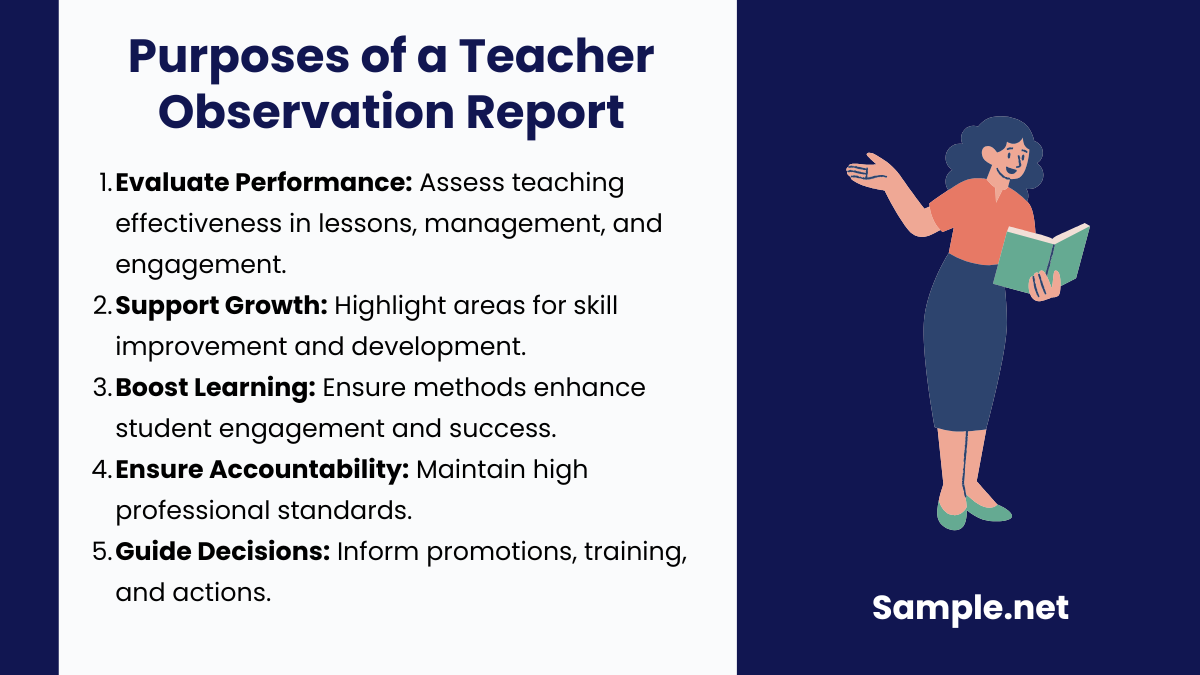
1. Evaluate Teaching Performance
Teacher Observation Reports provide a systematic way to measure a teacher’s effectiveness in delivering lessons, managing the classroom, and engaging students. These evaluations ensure teaching aligns with educational standards and institutional goals.
2. Support Professional Development
By identifying areas of strength and improvement, these reports offer actionable insights that guide personalized professional development, helping teachers refine their skills and adopt best practices.
3. Enhance Student Learning
Effective teaching directly impacts student outcomes. Observation reports assess whether teaching methods foster student engagement, understanding, and academic success, thereby ensuring quality learning experiences. You can also see more on Child Observation Report.
4. Promote Accountability
These reports hold teachers accountable for their instructional practices, ensuring they maintain high standards of professionalism and continually strive for excellence in their roles.
5. Inform Administrative Decisions
Teacher Observation Reports play a critical role in making informed decisions regarding promotions, tenure, training needs, or corrective actions. They provide a documented basis for these important determinations. You can also see more on School Visit Report.
How to Create a Teacher Observation Report
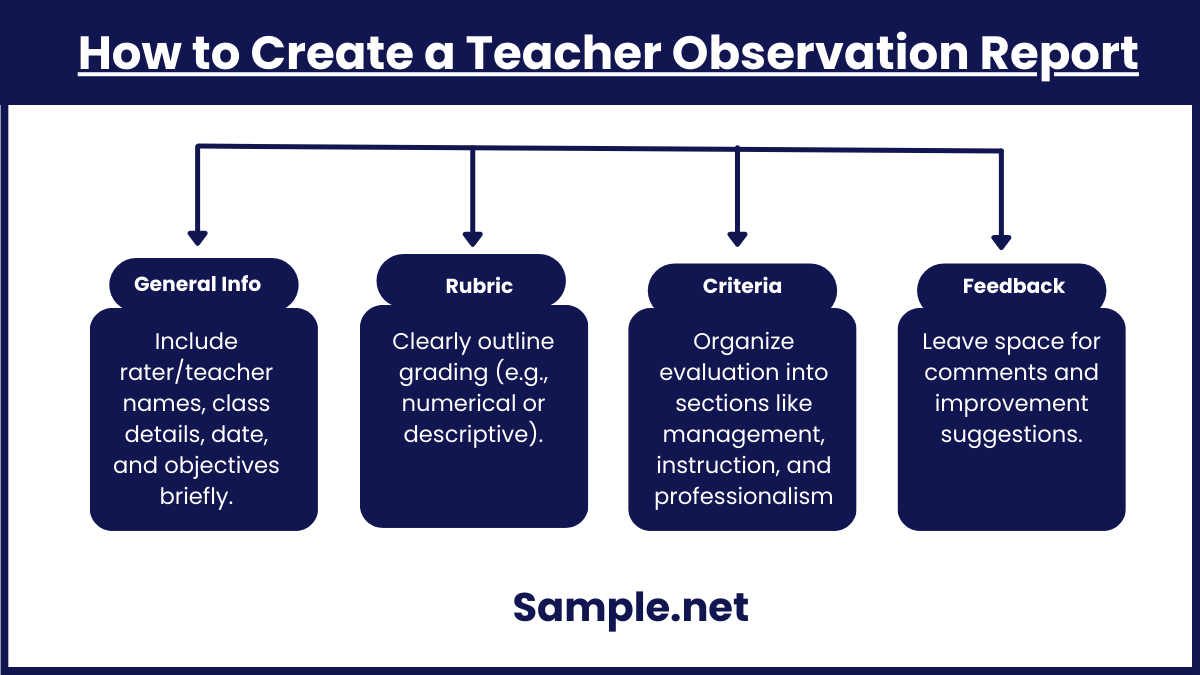
To create a good teacher observation report, you need to ensure it is comprehensive and detailed enough. The more detailed or specific the criteria is, the easier it is for the person to answer. If you want to save time and effort, use an existing template above and simply modify it to your liking. Do not forget to follow these essential guidelines when creating your observation report:
Step 1: General Information
To begin, key in all the basic information such as rater’s name, the name of the teacher to be evaluated, grade level, section or class, class size, subject, and date. Some reports do allow the rater to remain anonymous. In the case of classroom observation, you can also include the timeframe or length of observation. Aside from general information, you may enumerate a short list of the report’s objectives and other key instructions. Make sure these are stated clearly and coherently. It is best to keep both of these brief so as not to unnecessarily prolong your introduction. You can also see more on Teacher Incident Report.
Step 2: Rubric and System of Grading
A key element in a teacher observation report is the rubric or rating scale. This should be clearly and easily identifiable on the front page of the report. This serves as the basis of grading the teacher. Some rubrics are numerical while others are not. Rating scales may also vary according to the school. There are schools that use numbers as measurement, where 1 is the lowest and 5 is the highest score. While other schools prefer descriptive methods by using ratings like excellent, satisfactory, unsatisfactory, or needs improvement. Whatever the rubric, it is imperative that it is clearly explained and done so in a direct manner.
Step 3: Questions and Criteria for Judgment
Once you have your preferred rubric in place, you need an organized set of items for the rubric to apply. These items serve as criteria for judgement. The items could be simple questions or generic descriptive statements. To make it more organized, divide your criteria into different sections. Group your questions or statements accordingly. Some examples of general sections include classroom management or climate; quality of instruction, content or mastery or subject; student relationship and progress; work ethic; competency and professionalism, etc. You can also see more on School Survey Report.
Step 4: Comments and Suggestions
In case the criteria falls short or does not cover a particular aspect, it is imperative that you leave adequate space in the report for other comments and suggestions. It is important for your teacher observation report to contain a section dedicated to recommendations. The feedback given could be vital for the teacher and could help address any areas that need improvement. A simple comment box can suffice for as long as there is enough space to write down suggestions and other remarks.
Tips for Writing a Teacher Observation Report
Whether you are a fellow faculty member or a regular student, if you are tasked to rate a teacher or instructor, it might be helpful to keep these tips in mind:
Teacher Observation Reports play a pivotal role in enhancing educational outcomes by offering a structured way to evaluate and improve teaching practices. These reports, when crafted thoughtfully, empower educators to refine their methods, foster a better learning environment, and contribute to institutional growth. A robust observation process promotes a culture of continuous improvement, ultimately benefiting both teachers and students. You can also see more on Feedback Report For Students.
FAQs
How do you write an observation report for a teacher?
To write an observation report for a teacher, you need to create a standard criteria or rubric and come up with a set of questions or statements that will allow you to apply the rubric. To illustrate this, you can use any sample template from above and it will serve as a convenient guide and reference.
What is a teacher’s observation?
It is an assessment or evaluation of a teacher’s classroom performance by way of observing how the teacher conducts himself or herself in front of a class. It is meant to measure the competence, qualifications, and teaching style of a teacher or instructor. You can also see more on Training Report.
What challenges are associated with creating Teacher Observation Reports?
Challenges include maintaining objectivity, avoiding biases, and ensuring the observations accurately reflect the teacher’s typical performance. Training observers can mitigate these challenges.
How frequently should teacher observations be conducted?
The frequency varies by institution, but formative observations are often conducted several times a year, while summative evaluations may occur annually or biannually. You can also see more on Action Research Report.
How are Teacher Observation Reports used?
They are used to assess teaching effectiveness, provide feedback for improvement, and inform administrative decisions like promotions or training.
